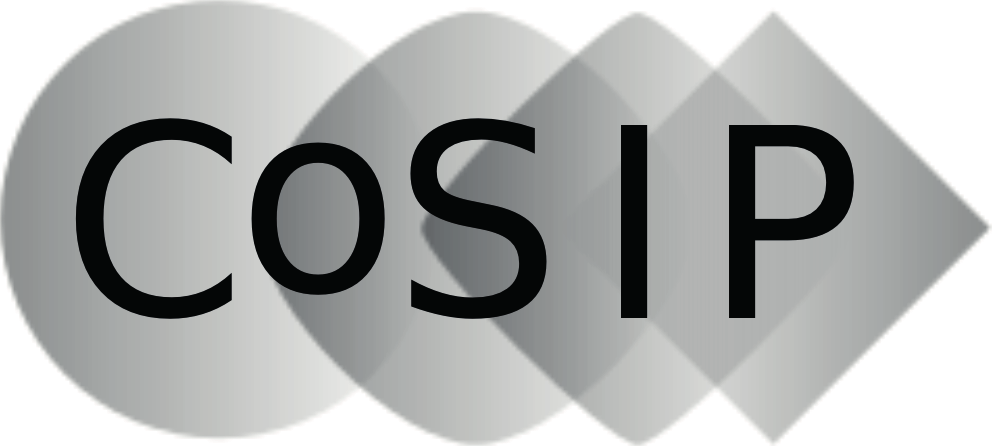Compressed Sensing for Sampling Multidimensional RF Signals - Architectures and Algorithms (CoSMoS)
- Jun.-Prof. Dr. rer. nat. Thomas Hotz
Technische Universität Ilmenau
Institute of Mathematics
- Prof. Dr.-Ing. Giovanni Del Galdo
Technische Universität Ilmenau
Drahtlose Verteilsysteme- Digitaler Rundfunk
- Prof. Dr.-Ing. habil. Reiner S. Thomä
Technische Universität Ilmenau
Fachgebiet Elektronische Messtechnik
Summary
This project aims at applying compressive sensing to the acquisition of RF signals that possess a sparse representation in a continuous domain, encompassing multiple dimensions (e.g., time, frequency, and space). There are many practical examples of such signals. For instance, in channel sounding the goal is to measure the channel transfer function whose variations along space, frequency, and time provide information about the propagation characteristics in terms of angular, delay, and Doppler parameters. It is a well established fact that the propagation between transmitter and receiver can be approximated by a number of specular reflections superimposed by diffuse components which are both described by a comparably small number of parameters, e.g., angles, delays, and Doppler shifts for specular components and a set of statistical parameters for the diffuse components. Yet, traditional sounding concepts require a very large amount of data to be recorded in order to extract these parameters with a satisfactory accuracy using high resolution parameter estimation methods. Therefore, it is our goal to apply CS to reduce the number of measurements without losing any relevant information.
A highly related application is MIMO radar where a receive array captures the reflections of an illumination provided by a transmit array, which allows to infer about scattering objects in a scene. While channel sounding aims to describe all propagation paths in the channel no matter how they are created (reflections at buildings, cars, etc.) in radar only the reflection from the target (or multiple targets) is of interest while other contributions (reflections caused by the surrounding environment) are considered clutter. However, the methods and algorithms used in channel sounding/channel modeling can also be used for radar applications. The main difference is in the interpretation of the obtained parameters.
So far, CS has mostly been applied to sample one-dimensional signals with a strong focus on sampling in time (e.g., for signals that are sparse in the frequency domain). However, very little research has been carried out towards sampling the electromagnetic field in the spatial dimension, using suitable antenna array structures. In addition, there is still significant potential in exploiting the multidimensional sparse structure inherent in the signals of interest to improve the joint multidimensional compressive acquisition and signal recovery. We aim at studying architectures that achieve this multidimensional acquisition both from a theoretical side, e.g., compression rates that guarantee recovery based on somewhat idealized assumptions, as well as from a practical perspective, i.e., what is achievable with actual hardware implementations of these architectures and realistic models for the physical effects in wireless RF systems. This encompasses fundamental unsolved questions such as how antenna arrays that implement the CS paradigm can be designed and built as well as the implications a modified concept for the receivers will have on the ideal way of transmitting / illuminating the scene.
In addition to the architectures for acquiring the data, a second major part of this project is the signal processing that is applied once the compressed data has been recorded. The initial publications in the literature on applying sparse reconstruction to compressive measurements were not able to correctly account for the continuous nature of the parameter space that provides the sparse representation. This has led to the necessity of discretizing the parameter space, which is highly undesirable since such a gridding leads to an inherent model mismatch and has no physical justification. Recent advances in the mathematical literature have led to grid-free sparse recovery frameworks, e.g., using the atomic norm minimization framework. The absence of a grid makes them highly promising for the MIMO sounding application. However, only oversimplified models such as 1-D noise-less harmonic mixtures have been considered extensively in these frameworks so far. Therefore, advancing these results towards more realistic models is of great interest to the community. In particular, deriving performance guarantees for perturbed observations (e.g., due to the noise or due to diffuse reflections) in light of practically relevant metrics such as the achievable resolution or the dynamic range is highly desirable.
The main challenge here is to bridge the gap between the highly theoretical results in the mathematical community and the implications of the true physical nature of the wave propagation, i.e. to make the theoretical results practically usable, which we address by joining the mathematical and the technical viewpoint on the subject.

